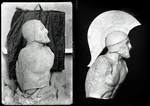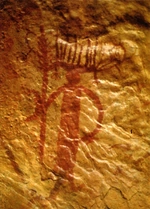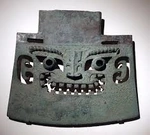Cultural Transition From African Prehistory to Sumer and Egypt, Or Great Migration Pathway
A widely spread approach of attempting to support any claim with notifications akin to “British Royal Society Discovers That Wet Underwear Is a Sign of Genius” is not our way. When certain points need to be declared, our honorable reader should be patient and ready to consider the arguments that supplement the declarations we provide in this article.
Fairly speaking, modern anthropology generally accepts the hypothesis of a human migration pathway from the African continent. Instead of relying on statements like “Some Society Discovers,” this hypothesis is supported not only by declarations but also by numerous archaeological evidences (see the link below: “Great Migration Pathway… see more”).
In this chapter, we will uncover the evolution of measurement systems, and it is logically appropriate to walk through the Mediterranean area, then return to Africa with its Egyptian civilisation, and continue to the Jewish kingdom.
Between The Tigris And Euphrates, Or Cradle Of Civilisations
This chapter is dedicated to the Sumerian Kingdom. Here, we briefly outline the main social and cultural characteristics of the civilisation, while a more detailed review awaits us in the discussion of the metrological tools of the culture that have been discovered to the present day.
But What ABout Sumerian Measurement Units?
| Category | Unit / Element | Approx. Metric | Subdivisions | Purpose / Use | Evidence / Artifact | Source / Reference |
|---|---|---|---|---|---|---|
| Length | Ammatu (Cubit) | ~49.5 cm | 1 nindan = 12 ammatu | Construction, urban planning, canal layout | Measuring rods, architectural plans, bricks | Kramer 1981; Postgate 1992 |
| Nindan (Rod) | ~5.94 m (≈ 12 cubits) | 1 nindan = 12 ammatu = 72 šu = 360 kush | Land surveying, long-distance construction | Copper alloy standard rods (Nippur), boundary markers | Civil 2000; Postgate 1992 | |
| Šu (Foot) | ~29.7 cm | 6 šu = 1 ammatu | Small-scale construction, crafts | Bricks, building remains | Civil 2000; Jacobsen 1960 | |
| Kush (Finger) | ~1.65 cm | 30 kush = 1 ammatu | Fine measurement for surveying and crafts | Clay rods with markings | Kramer 1981; Civil 2000 | |
| Beru (Double Rod) | ~11.9 m (≈ 2 nindan) | 2 nindan | Large distances (roads, canals) | Surveying tablets, boundary markers | Postgate 1992; Civil 2000 | |
| Volume | Sila | ~1 liter | Base unit | Grain, beer, oil rations | Clay measuring vessels, ration tablets | Kramer 1981; Civil 2000 |
| Ban / Ban-gur | ~10 sila | 10 sila = 1 ban | Daily rations, smaller grain measurements | Economic tablets, administrative records | Postgate 1992; Civil 2000 | |
| Gur | ~300 liters | 1 gur = 300 sila | Temple storage, taxation, bulk grain | Tablets from Ur, Girsu, Uruk | Kramer 1981; Jacobsen 1960 | |
| Nindan-cube | Derived from length units | – | Storage volume calculation, construction | Clay models, storage vessels | Civil 2000 | |
| Weight | Shekel | ~8.33 g | Base unit | Weighing silver, trade, taxation | Stone weights, balance stones | Kramer 1981; Civil 2000 |
| Mina | ~500 g | 60 shekels = 1 mina | Trade, taxation | Weights, balance stones | Postgate 1992 | |
| Talent | ~30 kg | 60 minas = 1 talent | Large-scale trade, metals, temple offerings | Stone weights, tablets | Civil 2000; Jacobsen 1960 | |
| Mathematics / Calculations | Arithmetic | – | – | Addition, subtraction, multiplication, division | Clay tablets, accounting texts | Robson 2008; Kramer 1981 |
| Geometry | – | – | Land surveying, canal construction, temple layout | Field measurement tablets, architectural plans | Postgate 1992; Civil 2000 | |
| Problem-solving / Algebraic | – | – | Workforce distribution, rations, contracts | Ur III tablets, word-problem tablets | Robson 2008 | |
| Sexagesimal system | Base-60 | – | Astronomy, timekeeping, fractions, accounting | Numerical tablets, astronomical records | Friberg 2005; Civil 2000 | |
| Astronomical / Calendar | – | – | Lunar calendars, irrigation scheduling, festivals | Observational tablets | Kramer 1981; Postgate 1992 |
Measurement Units (Incredible, at great length, we come to lengths?)
First of all, we have to insert here a remark related to the symbolism and abstract nature of measurement units as socio-cultural phenomena. Like any other form of social agreement, standardisation—whatever form of unification it represents—is an exclusive characteristic of the culture that possesses those standards. Further evolution of intersocial communication may lead to sameness (or perceived sameness) and to the migration and inheritance of measurement units from one culture to another...
Length, Volume And Weight Units
Sumerians developed a system of measurements for practical purposes like construction, land allocation, and trade. Archaeological evidence comes from cuneiform tablets recording transactions, construction, and surveying.
About the length, main derived from encrypted sources are: Cubit (nindan / šu-si) ≈ 49.5 cm, Foot (šu) ≈ 30 cm, Kush (finger) ≈ 1/30 nindan (Cubit as shown before).
We may not overpass the volume units, and they are: Sila (liter unit) ≈ 1 liter, Gur = 300 sila (used in grain, beer, and oil)
The weights are represented with: Shekel ≈ 8.33 grams, Mina = 60 shekels ≈ 500 g, Talent = 60 minas ≈ 30 kg
We suppose that any extensive discussions about the context of any phenomena linked to socio-cultural expression always trickle down, like a small creek falling into the lake of inner-societal tools of personal communication, interaction, and evolving social behaviour—gradually shaping and establishing the rules and norms formed through communication itself, will not have a place here. But, since measurement units belong precisely to that realm of norms and rules, a brief consideration remains justified.
This article is part of a long-read publication. [Go to the full version →]







This chapter devoted to two cultures, Babylonia and Persia, and here uncover why...

And here the place we should turning backward, to culture, already passed but under other angle...







